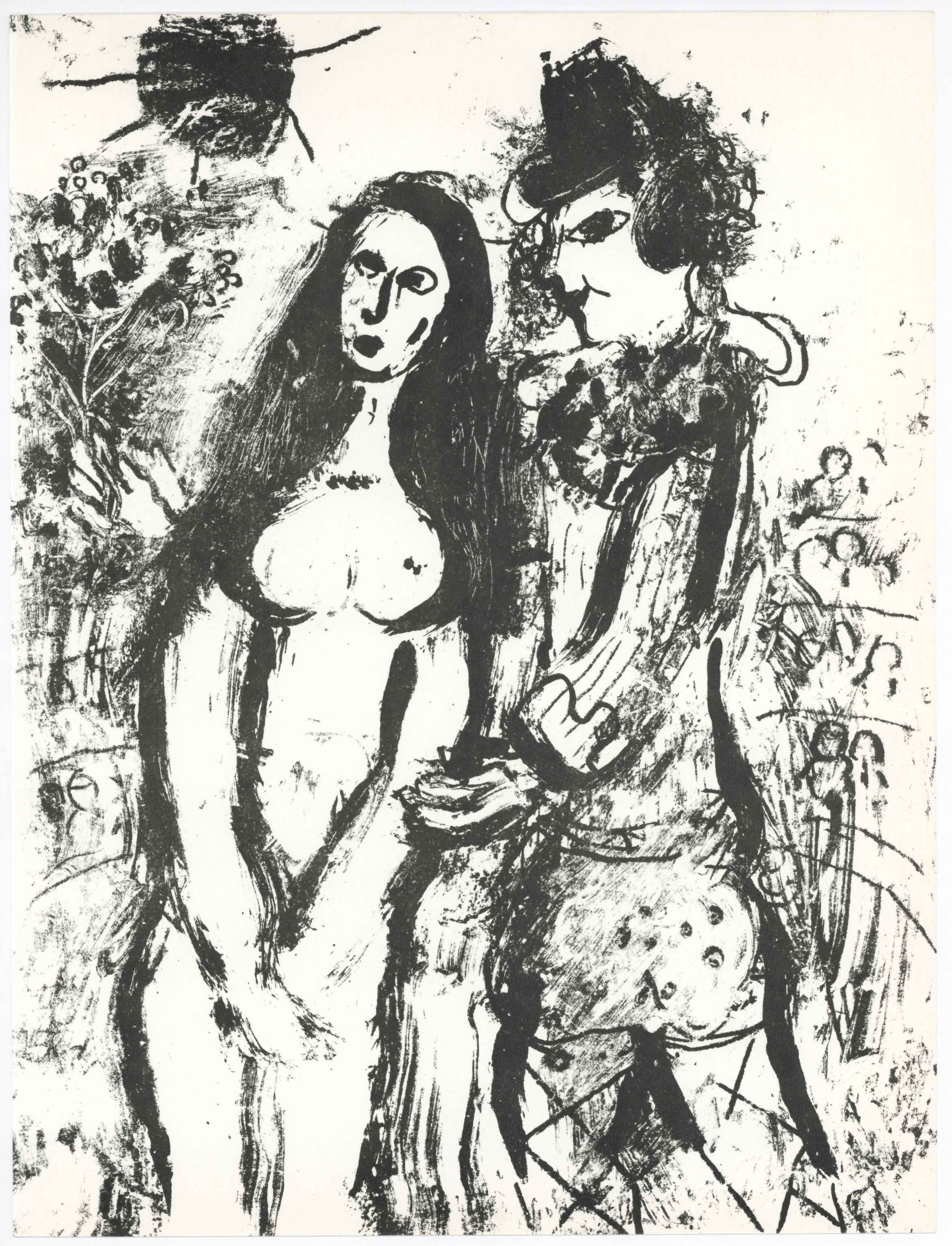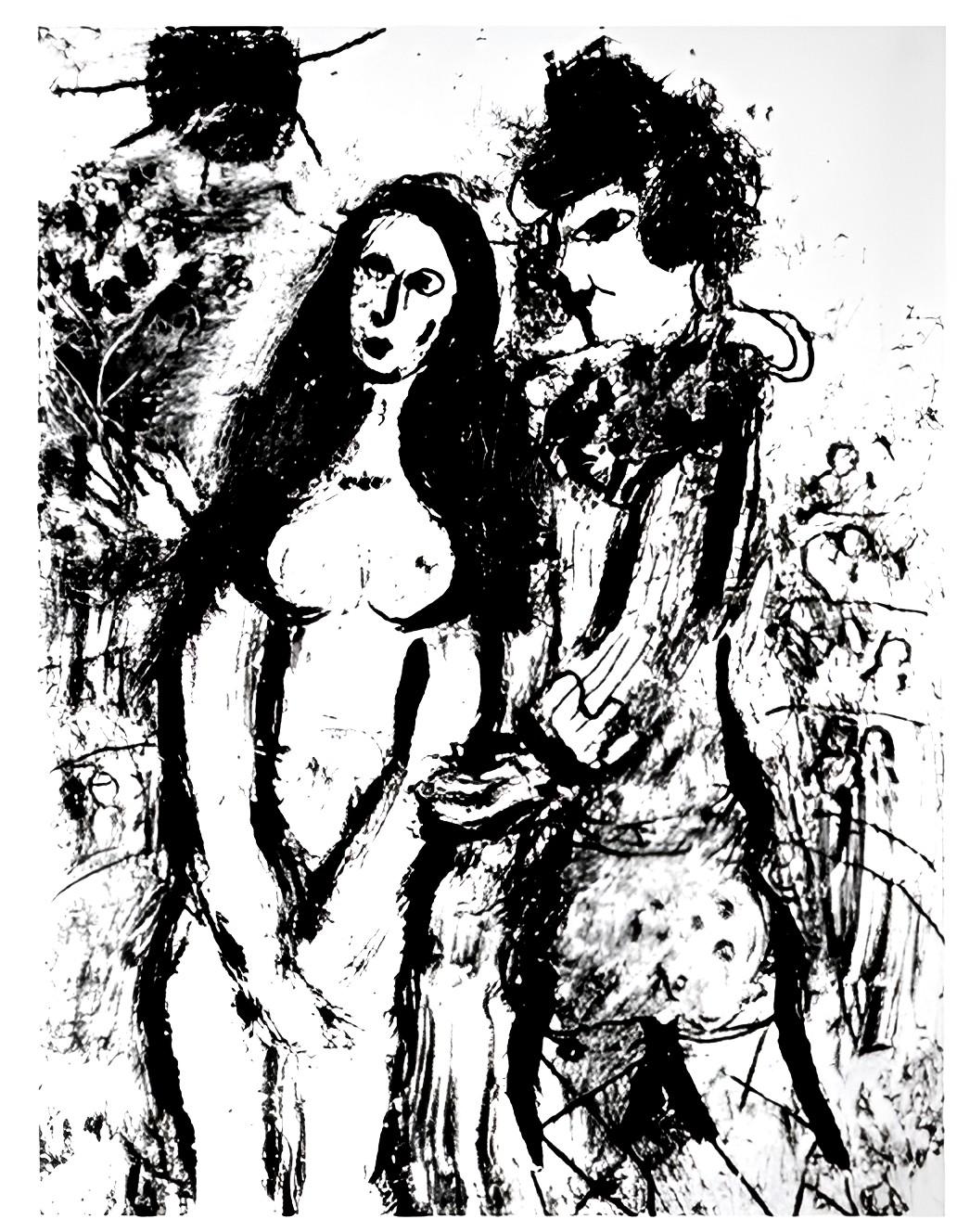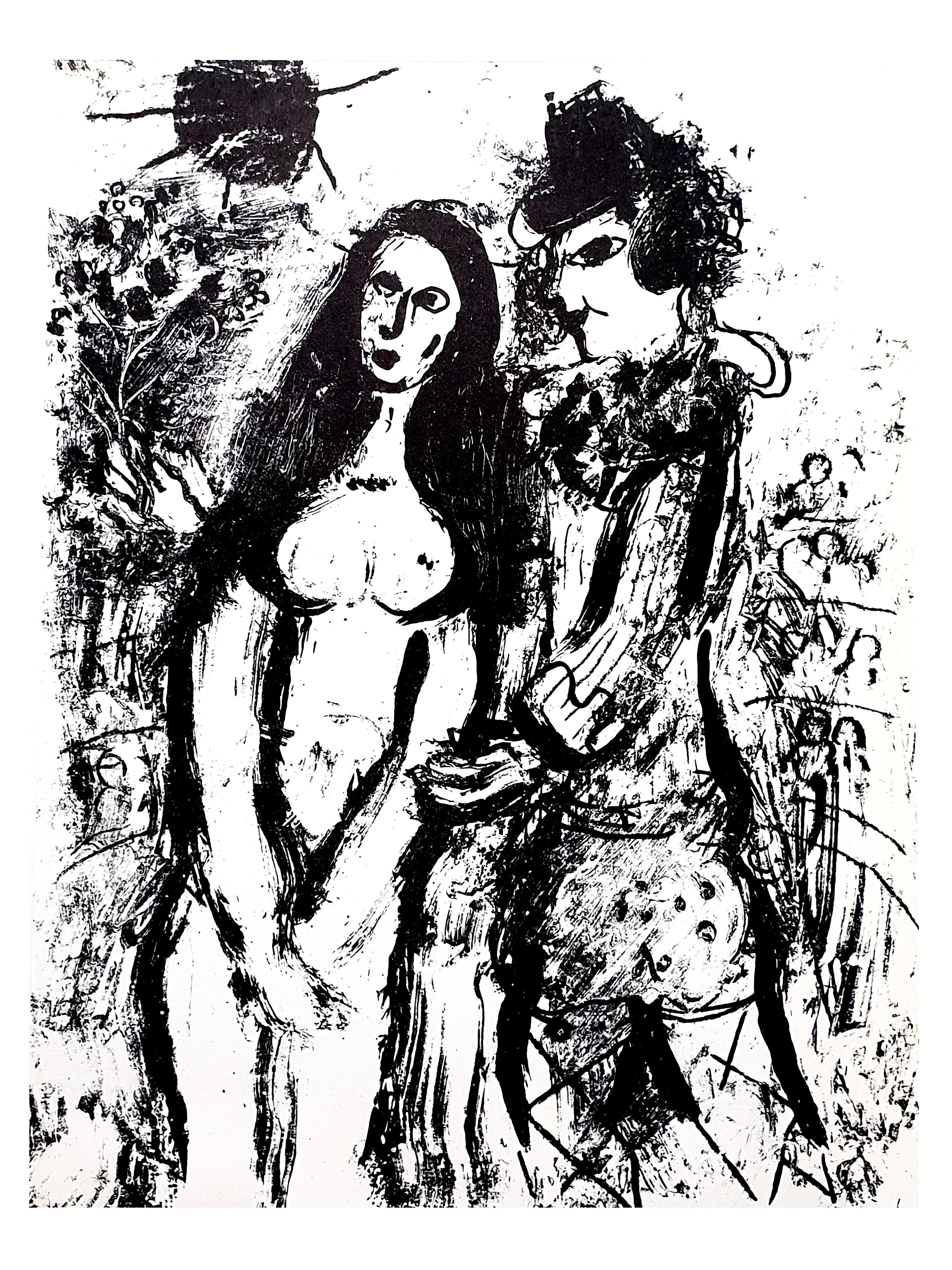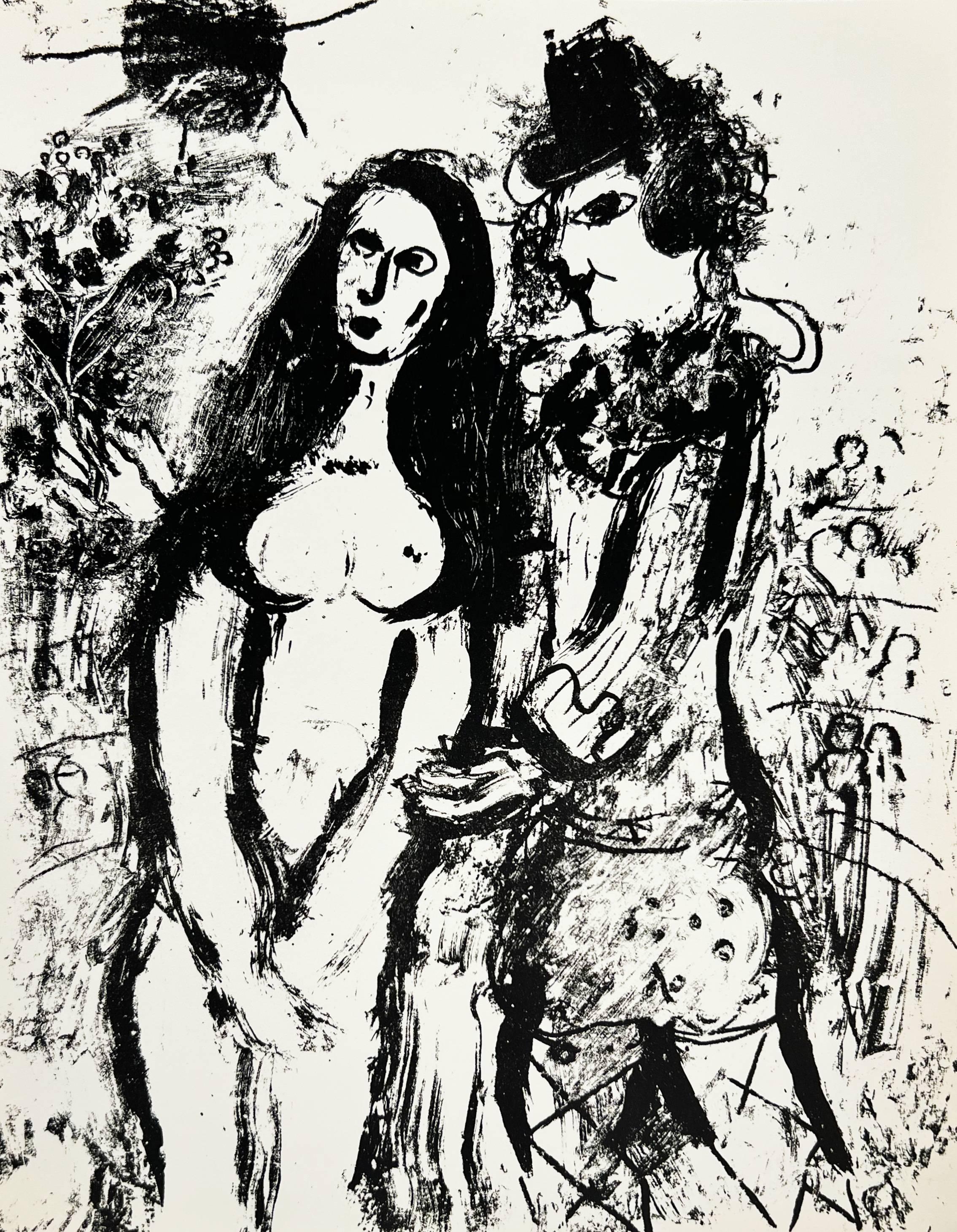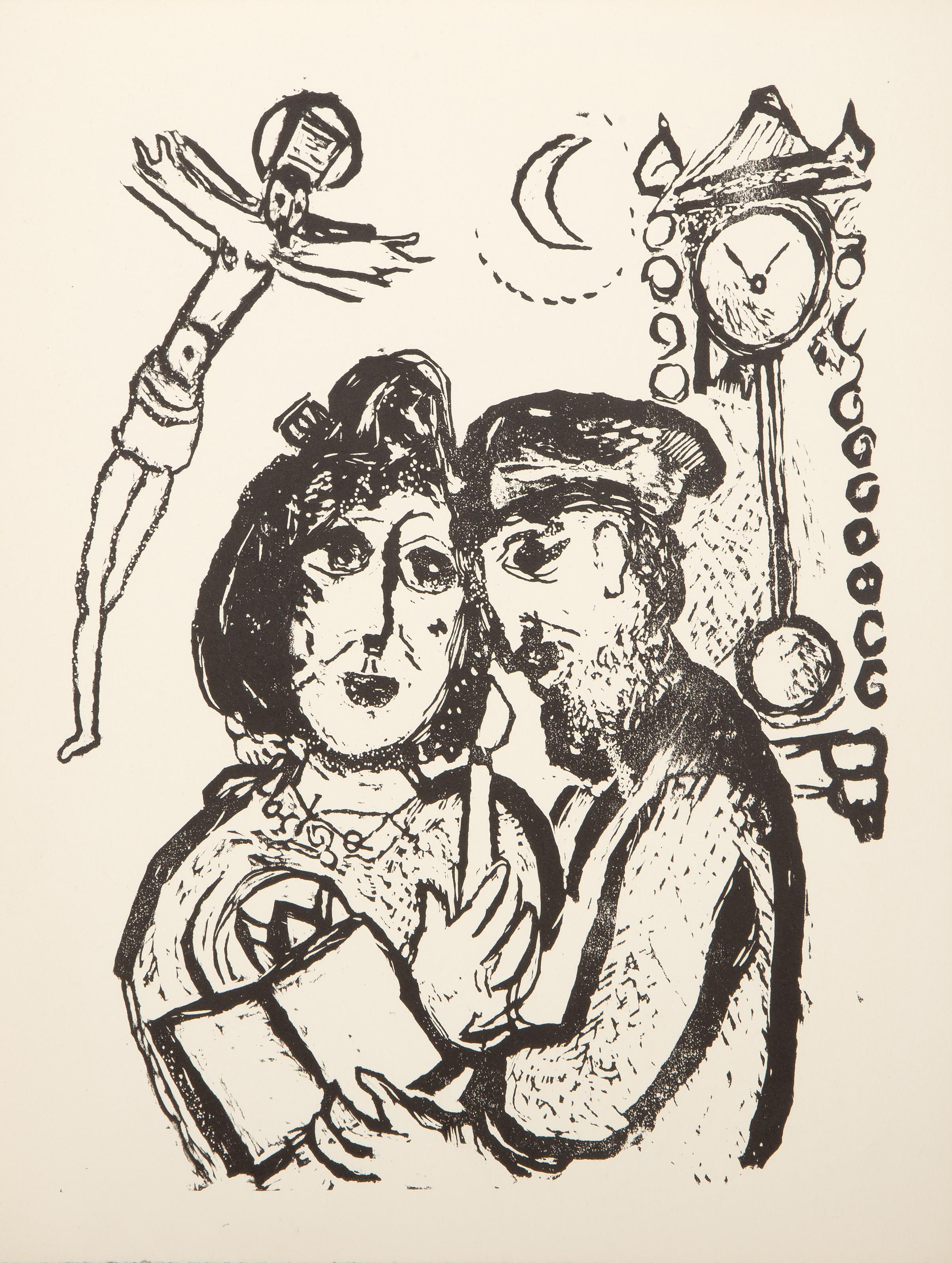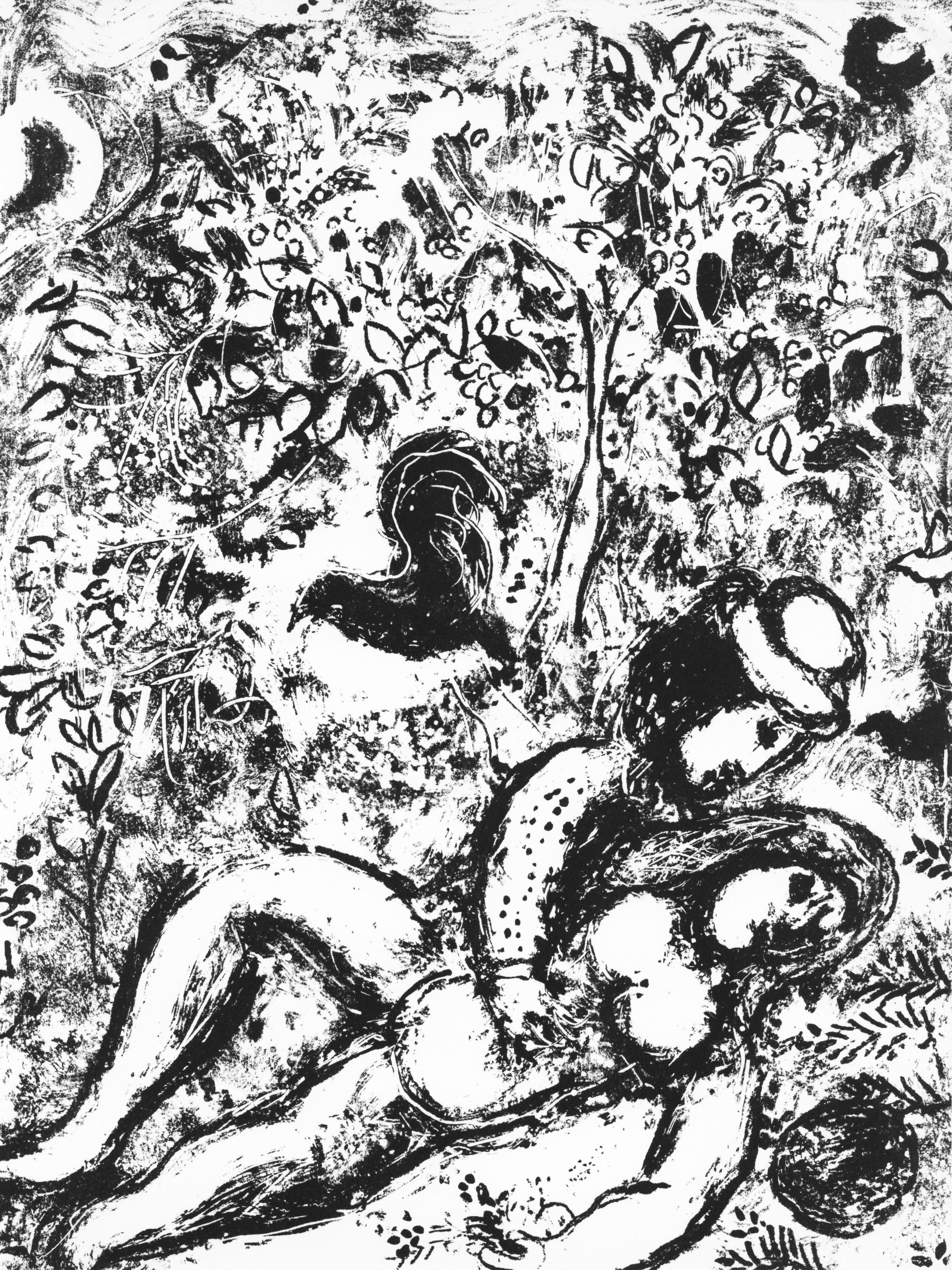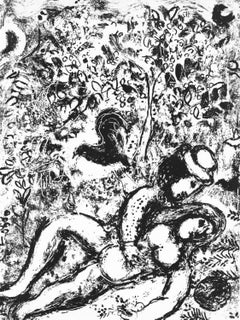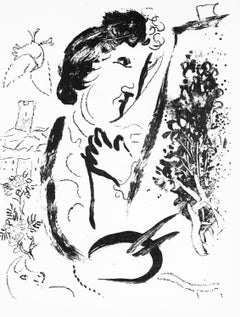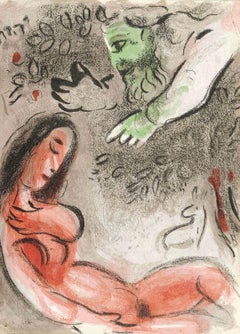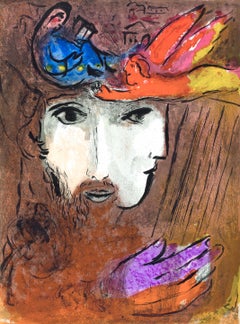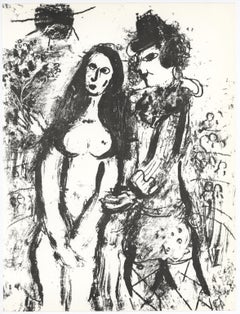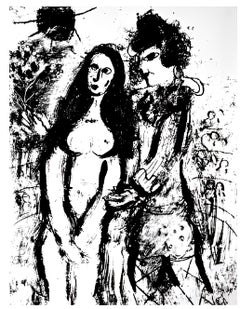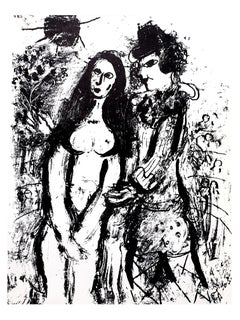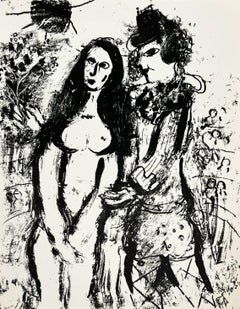This exquisite lithograph by Marc Chagall (1887–1985), titled Le Clown Amoureux (The Loving Clown), from the album The Lithographs of Chagall, Volume II, originates from the 1963 edition published by Andre Sauret, Editeur, Monte Carlo, and Boston Book and Art Shop, Inc., Boston, and printed by Mourlot Freres, Paris, September 1963. This enchanting composition reflects Chagall’s enduring fascination with the circus as a poetic allegory for life, love, and the human spirit. Le Clown Amoureux depicts a tender scene of a clown in love, rendered with luminous color, dreamlike fluidity, and symbolic grace. The work captures the delicate balance between comedy and melancholy, performance and sincerity, revealing Chagall’s deep empathy for the figures who inhabit his magical, emotional universe. Through the tender gestures and floating forms, the artist transforms the theme of the clown into an eternal emblem of love’s vulnerability and transcendence.
Executed as a lithograph on velin paper, this work measures 12.216 x 9.875 inches (31.03 x 25.08 cm). Unsigned and unnumbered as issued. The edition exemplifies the exceptional craftsmanship of the Mourlot Freres atelier, renowned for its close collaboration with Chagall and its technical mastery in fine art lithography.
Artwork Details:
Artist: Marc Chagall (1887–1985)
Title: Le Clown Amoureux (The Loving Clown), from The Lithographs of Chagall, Volume II, 1963
Medium: Lithograph on velin paper
Dimensions: 12.216 x 9.875 inches (31.03 x 25.08 cm)
Inscription: Unsigned and unnumbered as issued
Date: 1963
Publisher: Andre Sauret, Editeur, Monte Carlo, and Boston Book and Art Shop, Inc., Boston
Printer: Mourlot Freres, Paris
Catalogue raisonne references: Cain, Julien, and Fernand Mourlot. Chagall Lithographe III, 1962–1968. Andre Sauret, Editeur, 1969, illustration 394. Cramer, Patrick, and Meret Meyer. Marc Chagall: Catalogue Raisonne Des Livres Illustres. P. Cramer ed., 1995, illustration 56.
Condition: Well preserved, consistent with age and medium
Provenance: From the album The Lithographs of Chagall, Volume II, published by Andre Sauret, Editeur, Monte Carlo, and Boston Book and Art Shop, Inc., Boston, 1963
Notes:
Excerpted from the album, This album, which was designed and compiled by Fernand Mourlot and Andre Sauret, was finished in September 1963. The reproductions were printed on the presses of Draeger Freres, and the original lithographs on the presses of Mourlot Freres.
About the Publication:
The Lithographs of Chagall, Volume II, published in 1963 by Andre Sauret, Monte Carlo, and Boston Book and Art Shop, Inc., Boston, stands as one of the most celebrated volumes in the history of 20th-century printmaking. Conceived under the artistic direction of Fernand Mourlot, the collection brings together some of Marc Chagall’s most lyrical and visionary lithographs from the late 1950s and early 1960s. Printed with exceptional fidelity at the Mourlot Freres atelier, each work captures Chagall’s mastery of color and his profound emotional range. The volume serves as both a technical and artistic triumph, reflecting the fruitful collaboration between artist, printer, and publisher. Within its pages, Chagall’s dreamlike imagery—filled with lovers, clowns, animals, and celestial motifs—embodies his belief in the spiritual unity of art and life. The 1963 edition of The Lithographs of Chagall remains a landmark publication, celebrating the artist’s poetic imagination and his ability to translate the ineffable into enduring visual form.
About the Artist:
Marc Chagall (1887–1985) was a Belarus-born French painter, printmaker, and designer whose visionary imagination, radiant color, and deeply poetic symbolism made him one of the most beloved and influential artists of the 20th century. Rooted in the imagery of his Jewish heritage and the memories of his childhood in Vitebsk, Chagall’s art wove together themes of faith, love, folklore, and fantasy with a dreamlike modern sensibility. His unique style—merging elements of Cubism, Fauvism, Expressionism, and Surrealism—defied categorization, transforming ordinary scenes into lyrical meditations on memory and emotion. Influenced by Russian icon painting, medieval religious art, and the modern innovations of artists such as Pablo Picasso, Henri Matisse, and Georges Braque, Chagall developed a profoundly personal visual language filled with floating figures, vibrant animals, musicians, and lovers that symbolized the transcendent power of imagination and love. During his early years in Paris, he became an integral part of the Ecole de Paris circle, forming friendships with Amedeo Modigliani, Fernand Leger, and Sonia Delaunay, and his creative spirit resonated with that of his peers and successors—Alexander Calder, Alberto Giacometti, Salvador Dali, Joan Miro, Wassily Kandinsky, Marcel Duchamp, and Man Ray—artists who, like Chagall, sought to push the boundaries of perception, emotion, and form. Over a prolific career that spanned painting, printmaking, stained glass, ceramics, and stage design, Chagall brought an unparalleled poetic sensibility to modern art, infusing even the most abstract subjects with human warmth and spiritual depth. His works are held in the most prestigious museums around the world, including the Museum of Modern Art, the Centre Pompidou, the Tate, and the Guggenheim, where they continue to inspire generations of artists and collectors. The highest price ever paid for a Marc Chagall artwork is approximately $28.5 million USD, achieved in 2017 at Sotheby’s New York for Les Amoureux (1928).
Marc Chagall Le Clown Amoureux, Chagall Mourlot Freres, Chagall Andre Sauret, Chagall Boston Book and Art Shop, Chagall 1963 lithograph, Chagall velin, Chagall collectible print, Chagall modernist lithograph.
